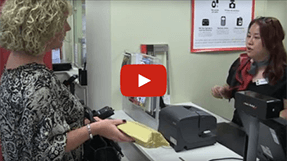Shipping Lithium Batteries
All standalone lithium batteries will be prohibited as cargo on passenger aircraft
The International Civil Aviation Organization (ICAO)—the United Nations agency that regulates the transport of dangerous goods aboard aircraft —enacted (UN 3480) as cargo on passenger aircraft.
Since lithium metal batteries (UN 3090) were already prohibited, the new regulation means no standalone lithium batteries, in any quantity or packaging, may be shipped as cargo on passenger aircraft.
Can you still ship lithium batteries by air? Yes.
Batteries packed with or in equipment (UN 3091 and 3481) may still be shipped compliantly, subject to regulations. (Passengers may still transport their battery powered devices and spare batteries in their carry-on bags—for now.
And all lithium batteries may still be transported on cargo-only aircraft, subject to regulations—see below. However, you need to be aware that airlines may have variations in place even though the regulations don’t prohibit them on cargo aircraft.
New state of charge limitations, consignment and OVERPACK restrictions
ICAO has also mandated that, effective April 1, 2016, standalone lithium ion batteries (UN 3480) can only be shipped by air with a state of charge 30% or less. In addition, shippers will be not be authorized to transport more than one package of standalone lithium ion batteries prepared in accordance with packing instruction 965 or 968 Section II per consignment. “A shipper is not permitted to offer for transport more than one package prepared according to Section II in any single consignment.” A consignment is defined as: ” One or more packages of dangerous goods accepted by an operator from one shipper at one time and at one address, receipted for in one lot and moving to one consignee at one destination address.”
No more than one Section II lithium battery package may be placed into an overpack.
Section II packages may not be offered in a unit load device and must be offered separately from other non-dangerous cargo.
So, come April 1st, if you have to ship lithium ion batteries by air which are not packed with equipment, you’ll have to:
- Ship them by cargo aircraft only (if the airline hasn’t filed a variation or implemented an embargo)
- Ensure they are at a state of charge no more than 30% of capacity
- Pack them separately from everything else
New lithium battery markings and labels

FedEx Express is changing its policy on standalone shipments of lithium batteries (i.e., not packed in or with equipment). That means shippers will have to change the way they prepare these shipments if they want to continue using FedEx Express.
Under the current rules, standalone shipments of lithium ion (UN3480) and lithium metal (UN3090) could be accepted as IATA Section II, commonly known as "Excepted Lithium Battery Shipments." Section II shipments of lithium batteries were not fully regulated, which meant they did not need Class 9 labels, UN packaging or Shipper’s Declarations, and there was no Dangerous Goods surcharge
Need help staying on top of the ever changing lithium battery regulations? We are here to help you stay compliant.
Dangerous Goods Packaging Services has the packaging and freight expertise to meet all the required regulations.

![]() Join us on facebook
Join us on facebook 




